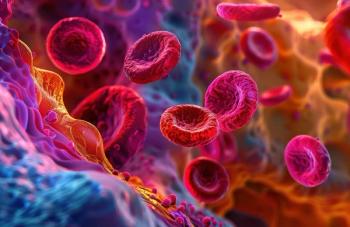
Brain Tumors Most Common Cause of Cancer Deaths in AYAs
A collaborative study conducted across cancer treatment centers in the United States has identified malignant brain tumors as the most common cause of cancer-related deaths in adolescents and young adults aged 15 to 39 years.
A collaborative study conducted across cancer treatment centers in the United States, and funded by the American Brain Tumor Association (ABTA), has identified malignant brain tumors as the most common cause of cancer-related deaths in adolescents and young adults (AYAs) aged 15 to 39 years, and the most common cancer diagnosed among 15 to 19 year olds.
The detailed study, published in the journal
Based on their analysis, the authors found that while brain and central nervous system (CNS) tumors were the most common type of cancer in the 15-19 age group, incidence of other cancers increased with age, such that among the oldest AYA age group, brain and CNS tumors followed breast and thyroid cancer in frequency of occurrence.
Some of the other findings from the study include:
- Brain and CNS tumors are : o the third most common cause of cancer-related mortality in the AYA population, following breast cancer and colorectal cancer o the second most common cause of cancer-related mortality in the 15 to 19 age group, after leukemia
- The study found a distinct pattern of incidence rates of brain and CNS tumors in the AYA population, based on geographic location.
o Incidence of primary brain and CNS tumors is lowest in New England and the Pacific regions and highest in the Middle Atlantic regions.
o Incidence of malignant primary brain and CNS tumors is lowest in the Pacific and South Atlantic and highest in West North Central and Middle Atlantic regions.
o Incidence of non-malignant primary brain and CNS tumors is lowest in New England and Pacific and highest in Mountain and West South Central regions.
- Overall, AYA incidence is highest in Whites, followed by Blacks, Asian and Pacific Islanders, and American Indian and Alaska Natives.
- Mortality, due to primary malignant brain and CNS tumors:
o is higher in males than in females, and the gap increases with age
o is highest in the West North Central and Esast South Central regions and lowest in the New England, Middle Atlantic, and South Atlantic regions.
Interestingly, the tumor subtypes vary between AYAs and adult patients—meningiomas and glioblastomas are common among adults while younger patients present with much more diversity. The study also reported a transition from premalignant to and low-grade tumors in the younger AYA patients, to predominantly high-grade tumors with increasing age.
Elizabeth Wilson, president and CEO of the ABTA said in a statement, “For these individuals—who are finishing school, pursuing their careers and starting and raising young families—a brain tumor diagnosis is especially cruel and disruptive. This report enables us for the first time to zero-in on the types of tumors occurring at key intervals over a 25-year time span to help guide critical research investments and strategies for living with a brain tumor that reflect the patient’s unique needs.”
According to the study, more than 10,000 cases of brain and CNS tumors are diagnosed in the AYA population, which is responsible for about 434 deaths annually.
Newsletter
Stay ahead of policy, cost, and value—subscribe to AJMC for expert insights at the intersection of clinical care and health economics.












































